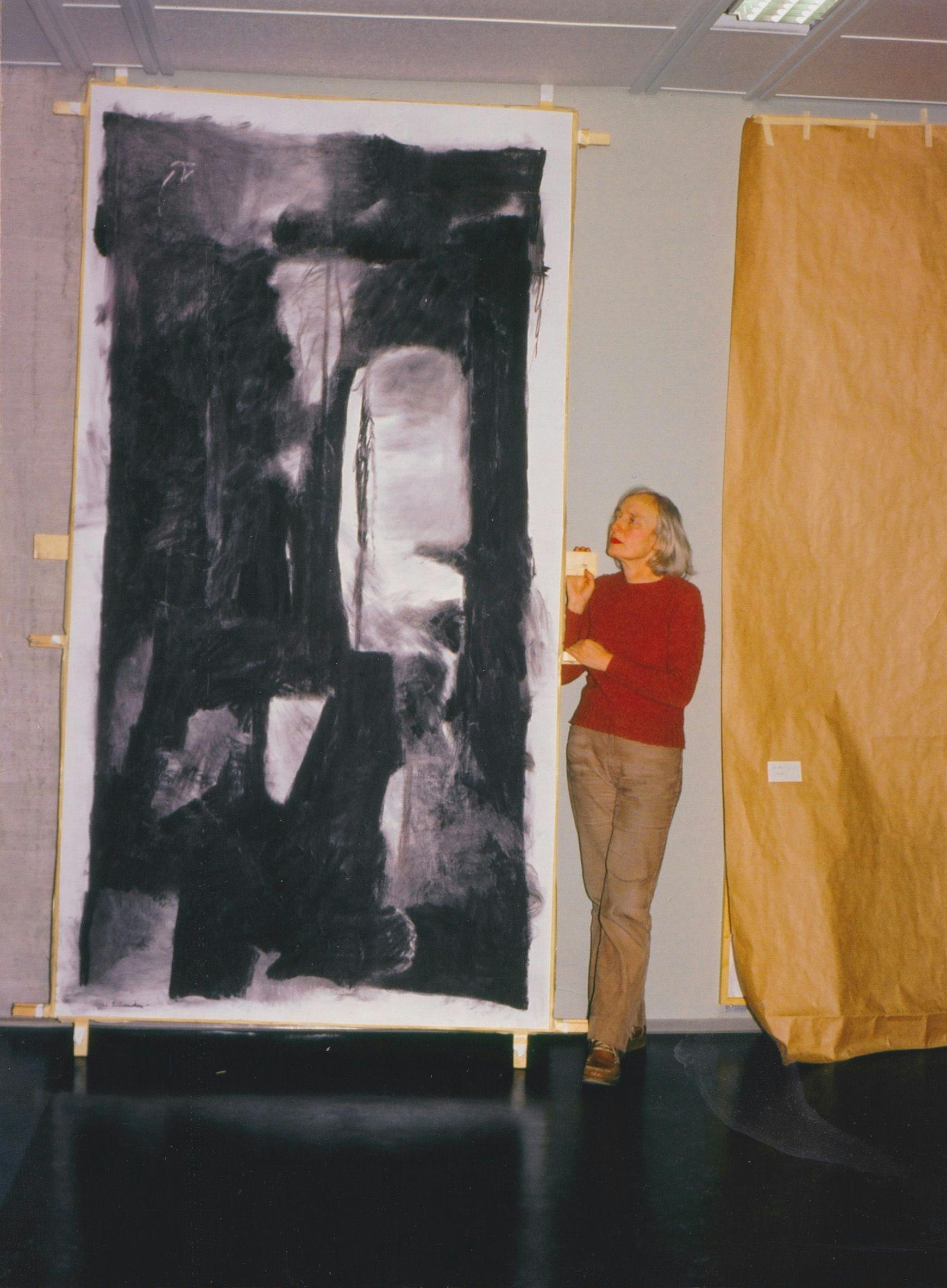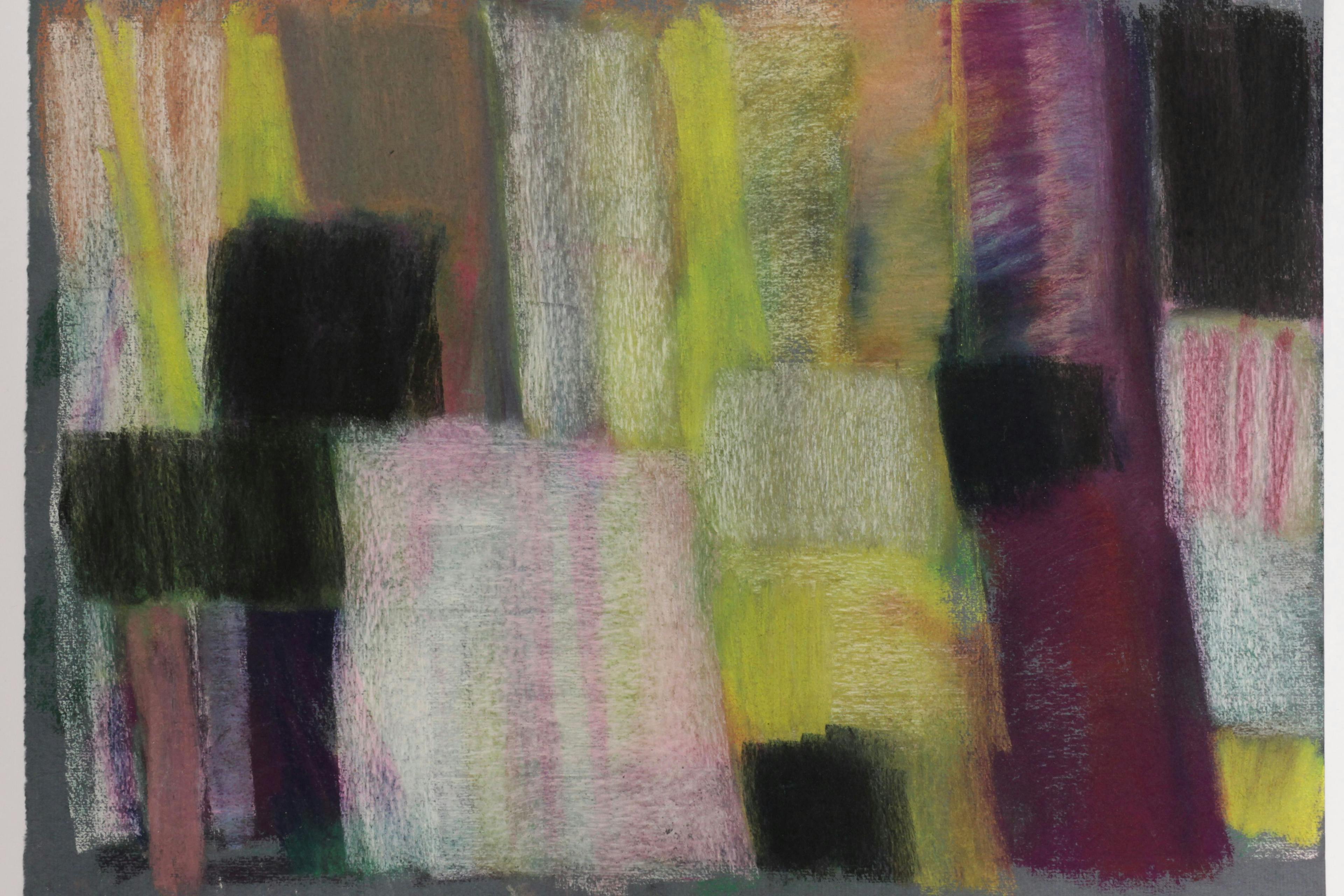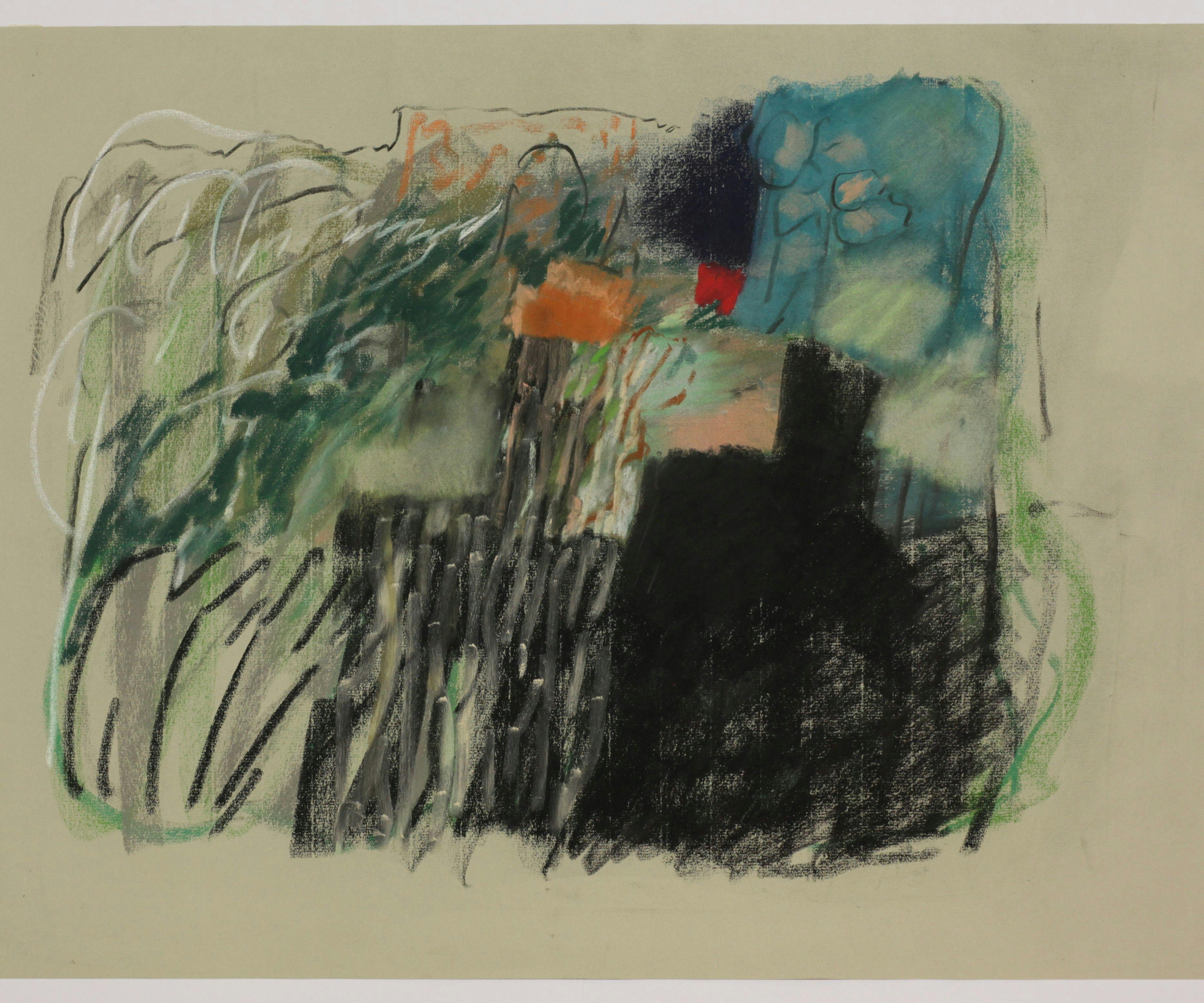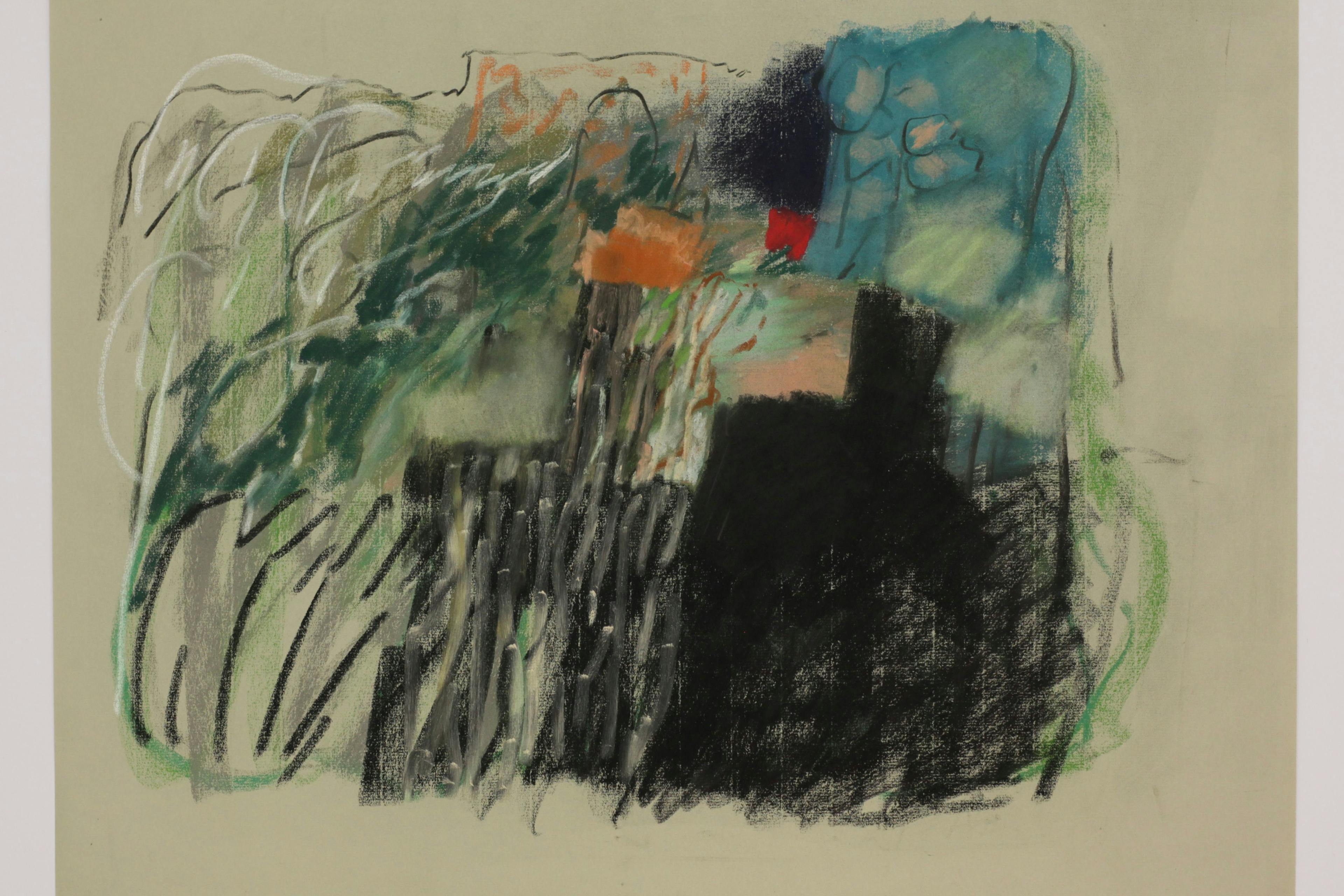Aase GulbrandsenConversing with memory
4.5.-22.9.2024
Curated by Andrea Elise Moen
Aase Gulbrandsen (1927–2020) made her debut in Kunstnerforbundet in 1970, and although her formal training was limited to a class in life drawing at Bjarne Engebret’s Art School, she quickly became recognised as a distinctive talent. This was further proved by her first solo exhibition of charcoal drawings at Oslo Kunstforening in 1974, which was well received.
Aase Gulbrandsen had an immense desire to reexamine and transform her impressions of the external world. As she once said: ‘It is nature I look at, but there is so much in nature that we cannot see.’ Her work from the 1960s shows her trying out different techniques, working in small formats with oil, charcoal, watercolours, and pastels. During the 1970s she immersed herself in larger-scale charcoal drawing, and while she continued to employ a variety of techniques throughout her life, charcoal remained her principal medium. Gulbrandsen’s method was intuitive and process-oriented. She would work on a certain piece over time, pushing herself to explore and investigate further. She also liked to take her drafts and earlier work up again, amending and reshaping them. A post-it note in her personal archive contains the following message: ‘I’ve got to get to the bottom of this’.

Exactly what it was that Gulbrandsen needed to ‘get to the bottom of’ remains a mystery, but her Nachlass contains many such notes, and very many artworks. Her art shows her conversing with memory, and with her own conceptions of reality. Looking at the many different series of works she left behind, one may notice how a concrete and distinct figure or contour can dissolve into something abstract, and vice versa. In some series, we see surfaces fold in on each other, light is flickering, and new spaces appear, although they might easily collapse. Colours are swallowed by darkness, only to reappear, gradually and tentatively. There is something gliding, dynamic, and changeable about her art that grips our attention.
Conversing with memory – Most of the works included in this exhibition were from the crucial, formative period of Gulbrandsen’s artistic career, lasting from the early 1960s until the end of the 1970s. The exhibition explored the artist’s way of working with materiality, expression, and composition over time. Several of the exhibited works had never been shown before and Conversing with Memory offered an exclusive and fascinating insight into a distinctive artistic universe.




Conversing with Memory was curated by Andrea Moen, who together with Marit Paasche and Kristine Jærn Pilgaard was responsible for the exhibition Aase Gulbrandsen. Til minnet at Oslo Kunstforening 07.03.–21.04.2024.
The exhibition was financed by The Bergesen Foundation, Arts Council Norway, Aase Gulbrandsens Stiftelse, and The Fritt Ord Foundation.
--
Installation photography: Nina Ansten
Participating artists
- Aase Gulbrandsen













